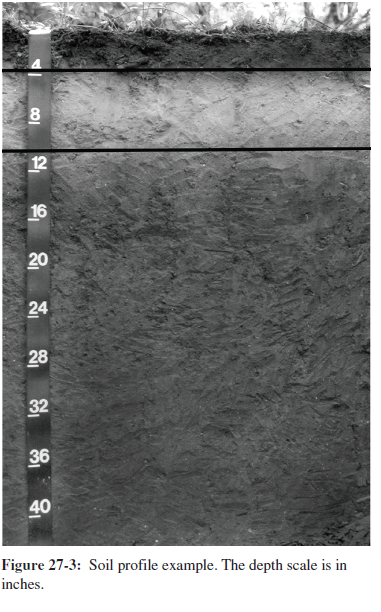The following questions are based on Figure 27-3, the photograph of a soil profile.
You may view this image in color by going to the Lab Manual website at MasteringGeography, or by scanning the QR code for this exercise. The depth scale is in inches.
What will be an ideal response?
Deep soil development; lack of visible C or R horizon.
You might also like to view...
Briefly discuss the giant African snail scenario in Brazil
What will be an ideal response
Coarse-grained igneous rocks are interpreted to have cooled slowly from magma, and so they are called:
a) intrusive b) reclusive c) extrusive d) obtusive e) preclusive
What is "dryland" agriculture?
A) agriculture in dry areas, made possible by irrigation B) agriculture that depends largely on seasonal precipitation to support farming C) agriculture that relies on special, hybridized crops that require almost no water D) agriculture that occurs on oases in land that is otherwise desert E) agriculture that occurs in desert lands, inside a greenhouse with a controlled environment
Why is it important for earth scientists to be able to identify the composition and distribution of rocks?
A. So they can locate economically important mineral and energy resources B. So they can identify the potential for future geologic hazards C. So they can piece together the history of Earth D. All are correct